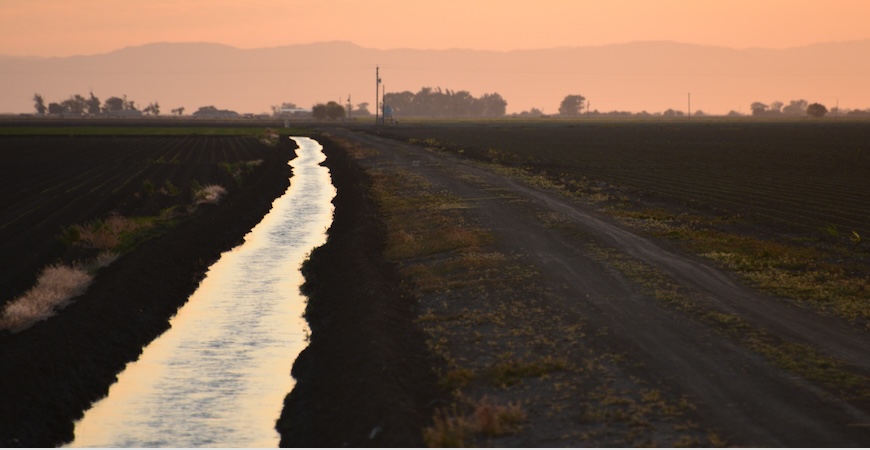
University of California researchers from the USDA-funded Secure Water Future project recently found that increases in crop water demand explain half of the cumulative deficits of the agricultural water balance since 1980, exacerbating water reliance on depleting groundwater supplies and fluctuating surface water imports.
California's San Joaquin Valley is home to some of the most fertile soil on Earth. Crops grown here are exported around the world. According to California Department of Food and Agriculture, more than 250 different crops, worth $30 billion per year, are grown in the larger Central Valley. The area accounts for 75 percent of the irrigated land in California and 17 percent of the country's irrigated land. And its farms provide a quarter of the nation's food and 40 percent of its fruit and nuts.
Growing those crops requires water. To compensate for the lack of precipitation during the growing season in the Valley's Mediterranean climate, irrigation is provided through a combination of surface and groundwater sources. There is increased reliance on groundwater pumping for agriculture where surface water supplies are limited - such as during droughts - and when crop water demands are high. Both conditions are often present in the San Joaquin Valley, where the region has been subject to accelerating the depletion of groundwater reserves over the past several decades.
Researcher Kelly Moyers, a post-doctoral scholar at the time, was the lead author of the study completed about increasing crop water demand as the climate has warmed, recently published in PLoS Water. The SWF team included UC Merced professors John Abatzoglou and Josue Medellín-Azuara, and UCLA Professor Alvar Escriva-Bou, as contributing co-authors. SWF Director and UC Merced Professor Joshua Viers was the corresponding and senior author.
Researchers used data to estimate crop water demand in the San Joaquin Valley over the past 40 years. They focused on the climate effects on crop water demand, avoiding the confounding factors of changing land use and management practices.
The researchers called this phenomenon of climate-induced increased crop water demand an invisible water surcharge. They found that in the past decade, this invisible water surcharge on agriculture has increased the crop water demand in the San Joaquin Valley by roughly 650 thousand acre-feet per year, a volume larger than the capacity of Millerton Reservoir on the San Joaquin River near Fresno. This represents a 4.4% increase with respect to the 1980-2011 baseline used in the study. Through an analysis of cumulative anomalies, researchers showed that the chronic increases in crop water demand over the last four decades explain half of the cumulative deficits in the agricultural water budget, and this trend is expected to worsen in the future.
Agricultural droughts are not only caused by precipitation deficits, but now more often by insufficient surface or groundwater reserves to fulfill increasing crop demands.
"With a high reliance on surface water imports and groundwater in our region, the combination of groundwater regulation and increased evaporative demands, as shown in this study, will further challenge our water management options," said Medellin-Azuara, coauthor in the report. Increased evaporative losses also apply to open water bodies like reservoirs, making managed aquifer storage more attractive during wet years, he added.
"The long-term decline in spring snowpack is a hallmark symptom of a warming climate in the state. Our study shows this hidden tax of increased crop water demands with warming is pouring salt in the wounds from the vantage of agricultural water resources," said Abatzoglou.
Despite potential agronomic adaptation and crop response to climate warming, increased crop water demand adds a stressor to the sustainability of the global fruit and nut supply and calls for changes in management and policies to consider the shifting hydroclimate.
A hallmark of the Secure Water Future approach to building climate resilience throughout the water scarce western United States, Viers concluded is "incorporating high resolution data into decision-making processes not only provides actionable insights for more effective management of our food-energy-water systems, but also demonstrates the value of research conducted in our institutions of higher education."




 Public Information Officer
Public Information Officer

